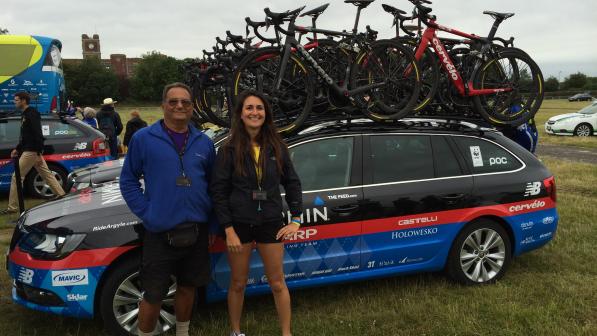What is Bikeability?

What is Bikeability?
Bikeability is based on the National Standard for Cycle Training and seeks to embed four core functions into rider behaviour: Observation; positioning; communication and priorities.
The programme is split into three progressive levels:
- Level 1 takes place in a traffic free environment; focusing on preparing the rider through appropriate choice of clothing, troubleshooting the bike, and is then followed by basic bicycle control skills, including starting, stopping, pedalling, negotiating space and signalling.
- Level 2 takes place on roads with light to moderate traffic, and includes starting, stopping, negotiating simple junctions and road features.
- Level 3 is delivered on more complex, busier and faster roads and junctions, and prepares riders for cycling in diverse road environments. Level 3 is offered to children in secondary school.
Since the scheme’s inception in 2007, over 2.3 million children have benefitted from training, and last year alone over 350 000 children were trained, with training itself being delivered by passionate and professional national standard cycle instructors, working through local training providers.
Importantly, Bikeability is not meant to be an intervention in isolation, but is designed to have a long term positive impact on family cycling. The practical skills learnt, and the fun that is had should encourage children continue to cycle with their parents, where children can pass on all the great hints and tips learnt, and carry on cycling as a lifestyle as they grow older, using the bicycle for leisure, commuting or utility as a sustainable and convenient way for getting around.
Does Bikeability actually have an impact?
A 2019 SQW report set out to evaluate the impact of Bikeability on children’s cycling, asking the question; does participation in Bikeability increase primary school pupils’ propensity to cycle? It was found that:
- Children were more likely to cycle since the start of term after training (65%) than before training (56%)
- Children were more likely to cycle on the road after training (34%) than before training (22%)
- Parents/guardians were more likely to allow their children to ride on roads after training (70%) than before training (58%).
So with confidence we can say that, based on feedback given, post course, children are equipped with a level of understanding and experience, enabling them to cycle ably and confidently to and from school, and on local trips outside school hours.
From previous studies we also know that with regards to training, parents consider that the health benefits of cycling are the most important, whereas for children, the bicycle is a social vehicle, for play and visiting friends. Encouragingly also parents view training as very important and almost all say their children’s confidence has improved since involvement in Bikeability.
Finally, and perhaps best of all, children also report that in their own view they are riding more safely post course, with much more confidence. Full report can be viewed on the Bikeability website.
Finally, there is more to Bikeability than Levels 1,2 and 3 only. Also available are separate modules to meet the range of families’ cycling needs. These ‘Plus modules’ include working with the early years through a ‘Learn to Ride’ programme, teaching children to fix their own bicycles, and engaging with parents with ‘on Show’ and ‘Ride’. More information can be found on the Bikeability website.
For schools or parents looking for training, a good place to start is your Local Authority, also a list of local training provides can be found by using the search function on the Bikeability website.
When you ride out as a family over summer, don’t forget to use #OurBikesOurAdventure on social media, and for more on bikeability, and some hints and tips for family cycling post Bikeability please visit https://bikeability.org.uk/










